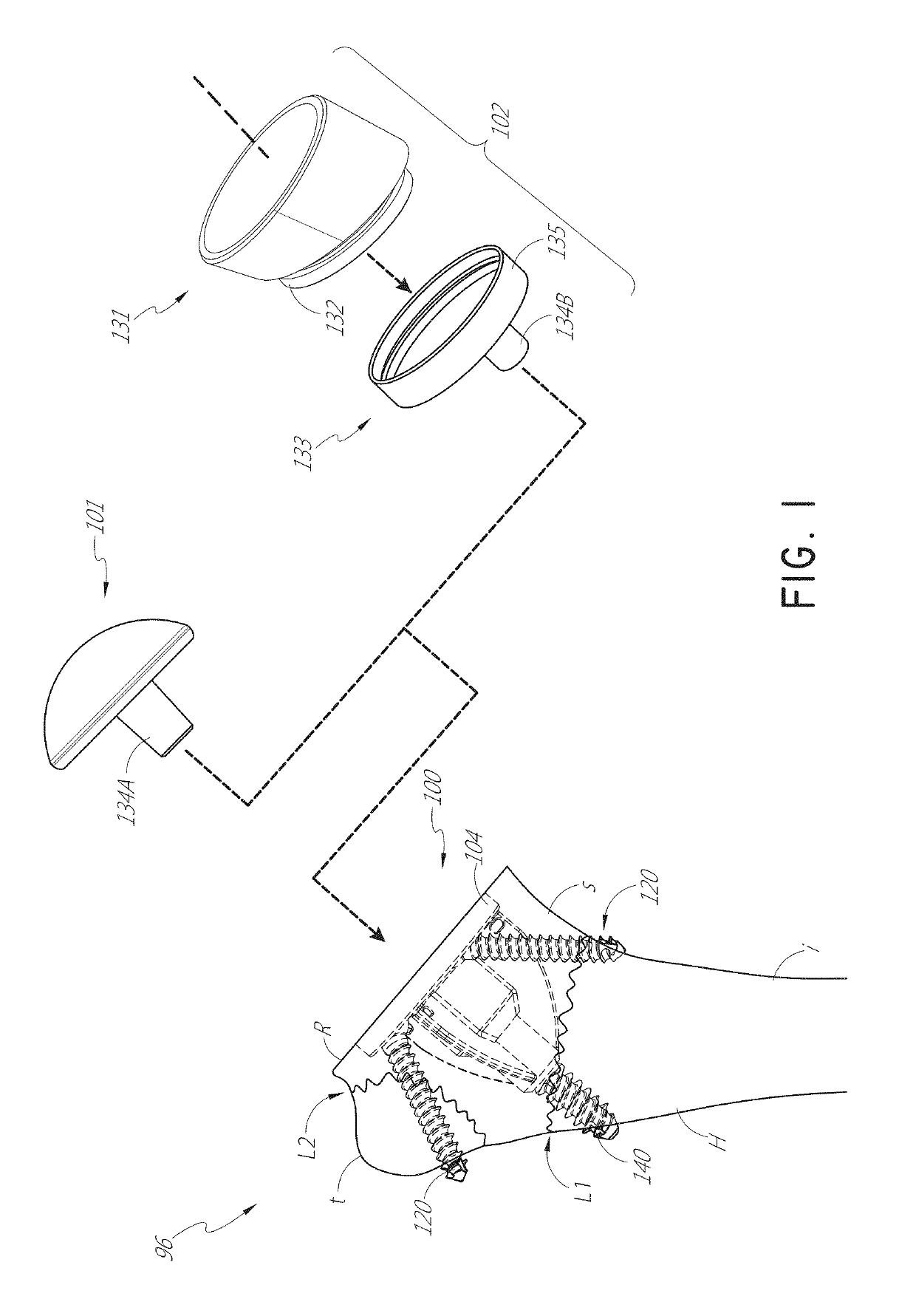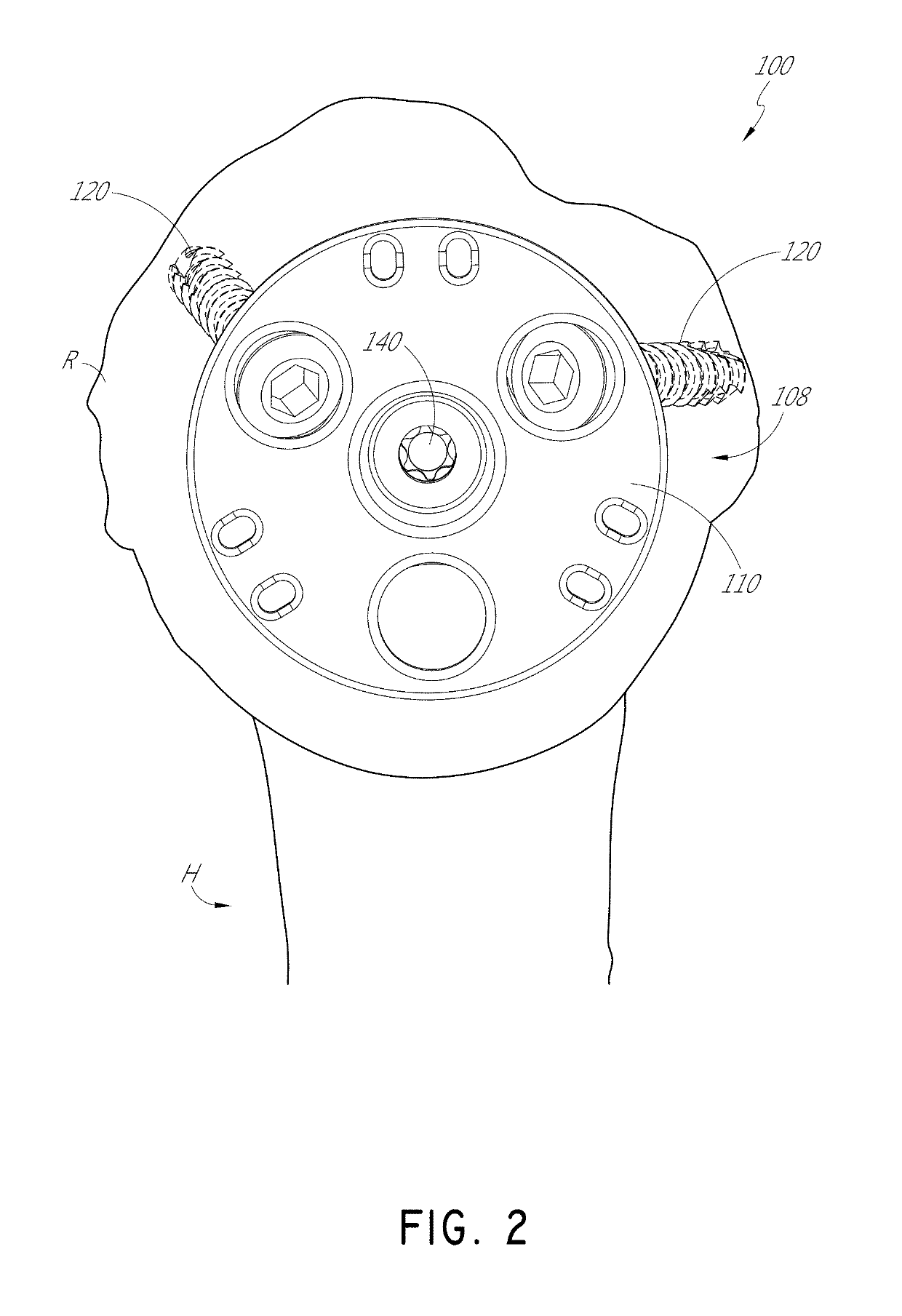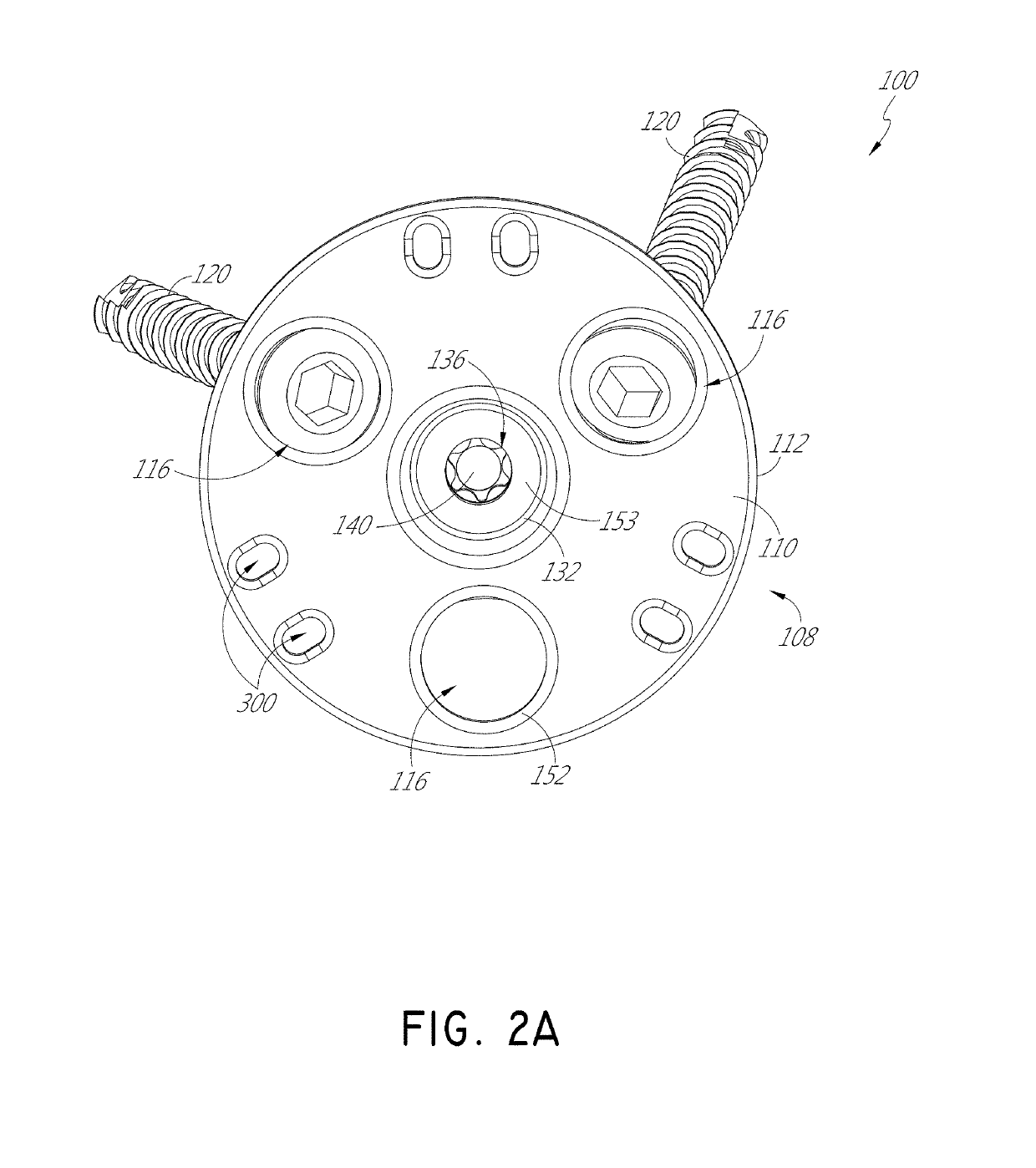Stemless shoulder implant with fixation components
a stemless, shoulder technology, applied in the direction of shoulder joints, prostheses, medical science, etc., can solve the problems of difficult removal of humeral components, disadvantageous removal of stems, and difficulty in removing humeral components, so as to improve the security of stemless humeral anchors
- Summary
- Abstract
- Description
- Claims
- Application Information
AI Technical Summary
Benefits of technology
Problems solved by technology
Method used
Image
Examples
Embodiment Construction
[0034]While the present description sets forth specific details of various embodiments, it will be appreciated that the description is illustrative only and should not be construed in any way as limiting. Furthermore, various applications of such embodiments and modifications thereto, which may occur to those who are skilled in the art, are also encompassed by the general concepts described herein. Each and every feature described herein, and each and every combination of two or more of such features, is included within the scope of the present invention provided that the features included in such a combination are not mutually inconsistent.
[0035]FIG. 1 shows a humeral assembly 96 that includes a humeral anchor assembly 100 having a humeral anchor 104. The humeral anchor 104 can be a stemless humeral anchor, as discussed further below. FIG. 1 shows two versions of the humeral assembly 96. In the first version of the humeral assembly 96, an articular component 101 of an anatomic pros...
PUM
 Login to View More
Login to View More Abstract
Description
Claims
Application Information
 Login to View More
Login to View More - R&D
- Intellectual Property
- Life Sciences
- Materials
- Tech Scout
- Unparalleled Data Quality
- Higher Quality Content
- 60% Fewer Hallucinations
Browse by: Latest US Patents, China's latest patents, Technical Efficacy Thesaurus, Application Domain, Technology Topic, Popular Technical Reports.
© 2025 PatSnap. All rights reserved.Legal|Privacy policy|Modern Slavery Act Transparency Statement|Sitemap|About US| Contact US: help@patsnap.com



